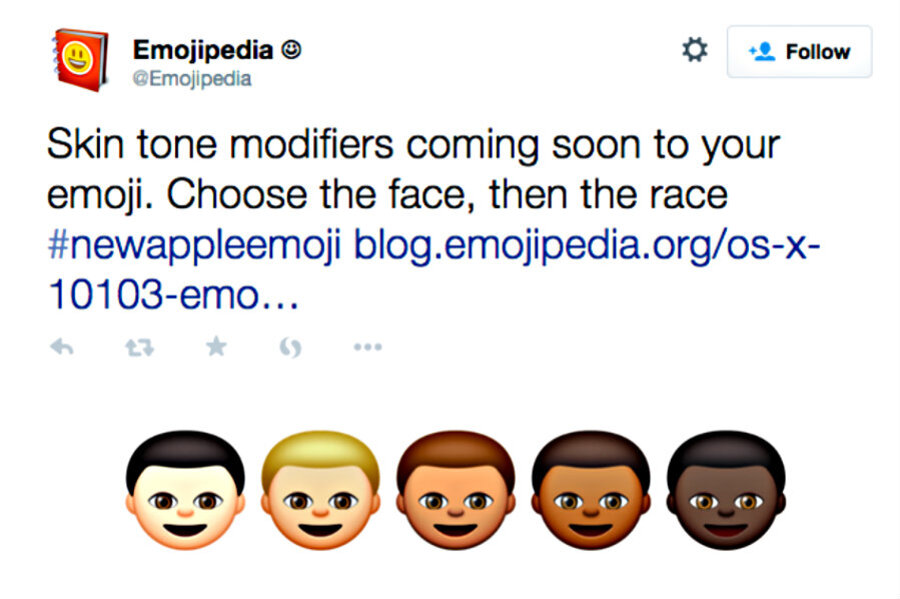Apple emoji embraces racial diversity
Loading...
The days of single-shade emoji characters are over.
This spring, Apple intends to release updates to OS X that will include an emoji keyboard with skin tone modifiers, 9to5mac first reported.
Each human emoji character will have, in addition to the yellow default option, five skin tone preferences based on the Fitzpatrick scale, a standard classification system used by dermatologists.
Concerns over the lack of racial diversity on emoji characters – pictograms used to convey humor or emotion via text messages – drove the software standard developer Unicode Consortium to include a range of skin shades, The Guardian reported.
Previously, the only characters representing non-Western people on the emoji keyboard were a brown-skinned man in a turban, a slant-eyed man wearing a traditional Chinese cap, and a man in a black cossack hat.
“People all over the world want to have emoji that reflect more human diversity, especially for skin tone,” according to the draft plan Unicode proposed late last year.
Apple released the OS X 10.10.3 beta update to testers Monday.
The expansion of the color palette on a bunch of cartoon pictograms may not sound like much. But other industries, increasingly aware of the value of having their products reflect racial diversity, have taken similar steps through the years.
For instance, one New York Times article noted how in cosmetics, the spectrum of shades available for foundation has widened considerably compared to 20 years ago, when “most beauty companies focused on Caucasian skin tones, with a few brands like Opal and Fashion Fair targeting the African-American customer.”
Today, designer makeup brand Lancome currently boasts at least 20 shades for each of its foundation products, while MAC Cosmetics has long featured lipsticks and cheek colors with stronger pigments that show better on darker skin, according to the Times.
“When I started as a makeup artist, I’d have to create the colours for darker-skinned models by hand – they just weren’t available,” makeup magnate Bobbi Brown told Stylist magazine. “Now the beauty industry is recognising there are many definitions of beauty, instead of a one-size-fits-all approach.”
In 2012, a Facebook campaign called “What’s Your Nude?” tried to call for better representation of various skin tones in bra and underwear manufacturing. The issue was that nude bras – meant to mimic the wearer’s skin color – tended to come mostly in a light range of shades.
“Women of color have voiced that they've been thinking this for years, and don't understand why it's taken bra makers and retailers so long to meet this need,” founder Tara Raines told TODAY.
As with any discussion on the implications of racial diversity, the issue of color in different industries is a draw for heated debate. While generally received as a welcome change, for example, Apple’s new emoji colors – in particular the yellow default skin tone – have drawn some criticism on social media, Quartz reported.
Others have felt that introducing new colors were counterproductive to progress.
When news of Unicode’s plan to expand skin tone options first went public in November, Bernie Hogan, a research fellow at the Oxford Internet Institute, told National Public Radio that “racially coded emoji” had the potential to both enhance digital communication and open a whole new can of worms in the diversity debate.
"Right now within political circles online, there's a lot of concern about voice, authenticity, representation and cultural appropriation – imagine people claiming who can and cannot use certain emoji," Mr. Hogan told NPR.
"I can imagine '22 White People Who Use the Black Emoji Wrong,'” he added. “That list is going to write itself."








